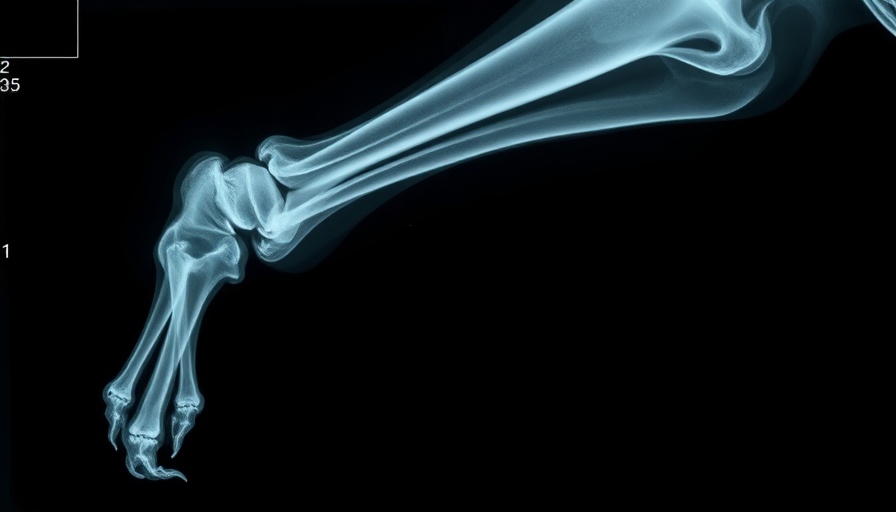
Unraveling the Mystery of Canine Limp
In the world of veterinary care, few challenges are as perplexing as diagnosing a limping dog. Take Mel, a 9-year-old Catahoula mix, whose recent case highlights the complexities veterinary professionals face. When Mel first arrived at the clinic, he presented with an acute limp on his left front leg, but surprisingly, he exhibited no signs of pain upon examination, and his range of motion seemed unaffected. The initial conservative treatment with Rimadyl resulted in improvement, but once the medication was discontinued, the limp returned.
Importance of Diagnostic Imaging
Radiographs played a crucial role in Mel's diagnostic journey, revealing smooth periosteal reactions at the proximal humerus. Such findings warrant careful consideration, as they can indicate multiple issues ranging from chronic inflammation to possible neoplasia. The importance of imaging in veterinary practice cannot be understated; it often serves as a bridge to unraveling complex cases, much like a detective piecing together clues.
The Role of Biopsies in Veterinary Diagnosis
Ultimately, Mel underwent multiple biopsies to investigate the concerning lesions, as well as fungal testing which returned negative results. This process underscores the necessity of definitive diagnostics in veterinary medicine. The reliance on surgical intervention not just for treatment but for clarity reinforces the need for practitioners to remain vigilant and proactive in pursuing evidence-based practices.
Challenges in Client Communication
As evidenced by Mel's case, client communication is paramount. Navigating delicate conversations about referral options and comprehensive treatment plans can be challenging. When discussing diagnosis and treatment options with clients, clarity and compassion are essential, as these conversations deeply affect the decision-making process.
Addressing Potential Future Outcomes
In Mel’s case, following the initial conservative treatments ultimately led to recommendations for surgical amputation as both a diagnostic and therapeutic step. This brings forth an important insight into the veterinary industry's evolving trends in utilizing surgery as part of a comprehensive approach to care, highlighting the shift toward integrated case management.
Mel’s journey reflects many challenges faced by veterinary clinics today. With careful diagnostics, effective communication, and a willingness to adapt strategies, practitioners can navigate the labyrinth of veterinary mysteries. It’s paramount for veterinary professionals to remain informed and prepared, ensuring they’re equipped to handle unusual presentations like Mel’s, ultimately enhancing client satisfaction and improving patient outcomes.
 Add Row
Add Row  Add
Add 

 Add Row
Add Row  Add Element
Add Element 




Write A Comment